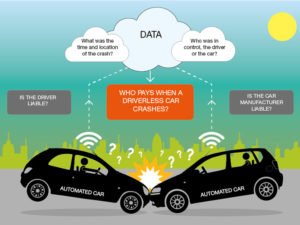Vehicle systems that require driver control are not ‘automated’, say insurers
Car technologies that require the driver to control or monitor the vehicle at any time cannot be classified as ‘automated’. So say UK insurers in a call for new criteria to be used in marketing for so-called ‘automated’ or ‘driverless’ cars.

The term ‘automated’ should not require any driver input, says the insurance industry
Although the insurance industry has repeatedly said the advent of truly driverless vehicles will benefit road safety and mobility, insurers have expressed concerns that the evolution of automated driving technology could result in a short-term increase in crashes due to driver confusion over the input needed on semi-autonomous systems.
Now, the Association of British Insurers has published a list of 10 key features and performance criteria that they say should be required by both the government and manufacturers of automated vehicles to prevent customer confusion over their own level of responsibility behind the wheel, as vehicles become increasingly advanced.
This includes requiring such vehicles to give adequate notice if control needs to be handed back to the driver along with a clear ‘offer and confirm’ process and back-up systems to intervene in the event of a problem, including a ‘safe stop’ procedure.
The criteria has been published following last month’s first reading in the House of Commons of the Automated and Electric Vehicles Bill, which will provide a framework for insurance on autonomous vehicles, including establishing liability where an accident is caused by the automated vehicle itself.
Insurers are also calling for data to be made available on an individual vehicle level to show which vehicles are running on older software or need important maintenance.
Matthew Avery of Thatcham Research said: “By recording these changes at Vehicle Identification Number level, insurers, rental and lease companies, fleet operators as well as law enforcement agencies would be made aware of any change to the automation status of a vehicle. Immediate data access will also be essential in allowing insurers to determine whether the driver or automated system was at fault in the case of an accident.”
automatedAutomated and Electric Vehicles Billautonomous carsblamedriverlessInsuranceliabilitysafety














